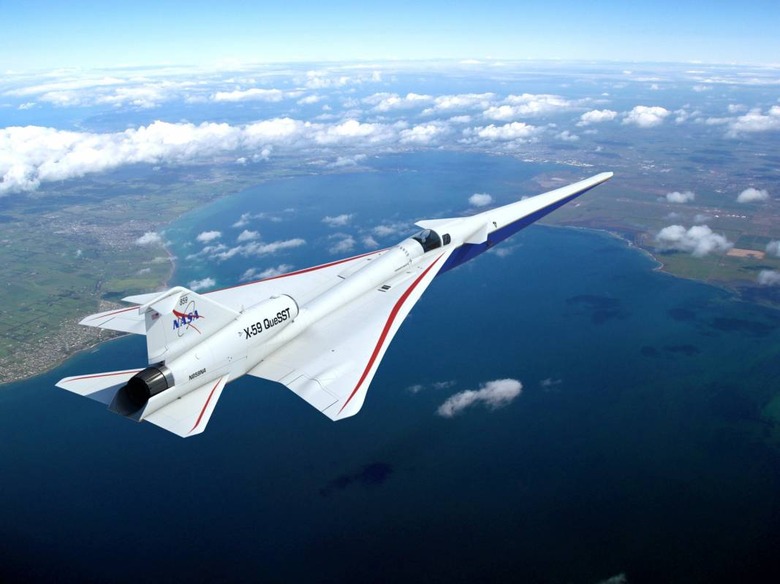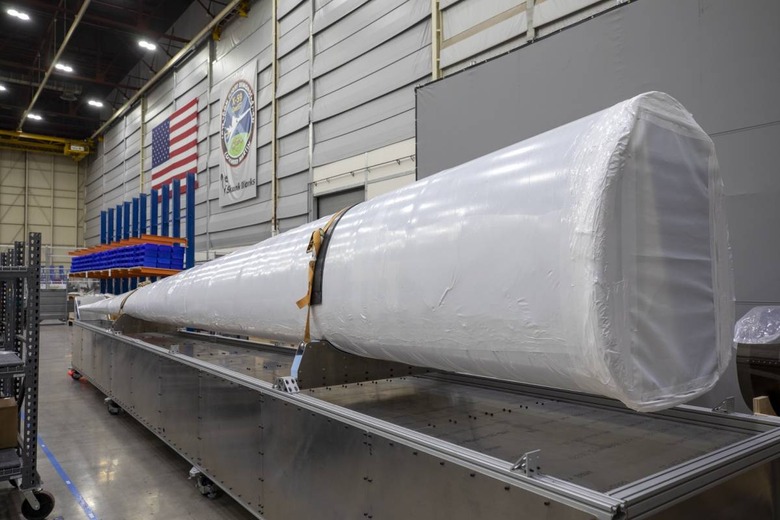NASA's Stealthy Supersonic X-59 Just Got A Schedule Change
NASA has pushed back the maiden flight of its experimental X-59 Quiet SuperSonic aircraft, confirming today that the sound-barrier-breaking jet won't be ready in time for the original 2021 launch plan. Currently in production and assembly, the X-59 will test a cutting-edge engine and body design that could eventually help remedy one of Concorde's most significant problems.
That was never so much speed as it was sound. The supersonic jet became iconic for its ability to shave hours off a New York to London trip, but never achieved the same pace cross-country. That's because the sonic booms it generated as it broke through the sound barrier were too loud over occupied land, and so the jet's maximum performance was limited to when it was over the ocean.

With the X-59, NASA and partners Lockheed Martin think they can do better. Its distinctive delta wing design and super-long nose are designed to generate a supersonic shockwave. That, so the theory goes, will sound more like a quiet thump than the crack of a sonic boom.
Most recently, the plane's F414-GE-100 turbofan engine arrived, a custom design for the X-59 by General Electric Aviation. It joins the vertical tail and the extended-length nose at the Lockheed Martin Skunk Works facility in Palmdale, CA. However, despite advances, NASA says, the overall schedule has been adjusted.
Rather than flying in 2021, the X-59 now isn't expected to undertake its first flight until summer 2022. Major ground testing should begin roughly twelve months ahead of that, validating the general design. The X-59's wing still needs to be finished, which NASA expects to happen – along with attaching it to the fuselage itself – by the end of this year.
"We are over half-way complete with the build of this one-of-a-kind X-plane," David Richardson, X-59 Program Director at Lockheed Martin Skunk Works says. "We will soon complete close-out of the wing, which is the central structural anchor of the aircraft, and we will then prepare for mate of the empennage, fuselage, and the distinctive, super long nose." That nose assembly is shown – safely wrapped up – below.

Acoustic validation flights are currently targeted for 2023, while community overflights – where the X-59 will actually fly over occupied areas – aren't likely until late 2024. NASA still has time to massage the schedule, mind, since it's not expected to hand over results of the community overflights to the International Civil Aviation Organization and Federal Aviation Administration until 2027.
Those agencies will use that data to make a decision in 2028 around modifying the current rules about supersonic flight over land. NASA won't be building such planes itself, mind, intending instead to provide the results of its X-59 data to the industry as it attempts to shave hours of flight time off travel across the US and abroad.
